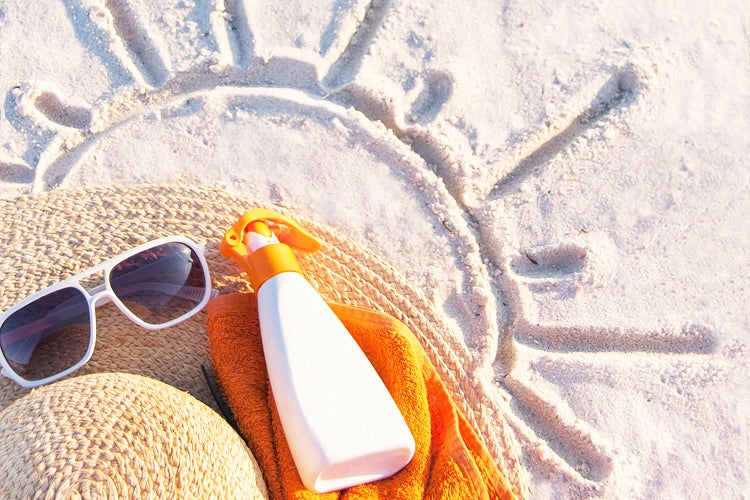For many, summer means sitting on the beach, absorbing the sun’s rays and cultivating a summer glow.
However, when the sun is out, it is important not to forget about proper skin health and protection.
In the summer months, dermatologist Dr. Miles Andrew, of St. Joseph Health System recommends that everyone pay extra attention to their skin’s health.
The immediate damage people feel after being out in the sun for too long is the most obvious, Andrew says. This damage includes hot, painful sunburns, sun blistering and redness. However, the less obvious, more dangerous damage is long-term.
“The main damage we’re concerned about won’t show up for a decade or two,” Andrew says. “The damage that can happen is anything from the unsightly, like age spots and wrinkles, to different types of skin cancer.”
With sun damage having such extreme side effects, protecting your skin from the sun is incredibly important, Andrew says. One of the best ways to do this is by applying sunscreen or other topical sun protection.
While this may seem simple, many people are not aware of the specifics of what kind of sunscreen they should use or how much.
Many people think the SPF correlates to how long sunscreen lasts or that double the SPF means double the sun protection, both of which are untrue, Andrew says.
SPF ratings refer to the percentage of the sun’s rays people are protected from. SPF 15 will block about 94 percent of the sun’s rays. SPF 30 will cover 97 percent and SPF 45 will cover 98 percent.
“Anything over 45 or 50 [SPF] is pretty meaningless with how effective they are,” Andrew says.
Once people figure out the right SPF rating to use, you may think they are completely protected and good to go, but that is not necessarily the case.
First off, people tend to use far less sunscreen than they need.
“To cover your entire body, you should be using a full ounce,” Andrew said. “That’s about as much as I can fit into the palm of my hand.”
As many name brand sunscreens come in 3-ounce bottles, people should use a third of a bottle every time they go to the beach.
Additionally, Andrew says no sunscreen is completely waterproof, so sunscreen should be reapplied regularly.
“The key to sunscreens and SPF is to know that most sunscreens will only last 80 minutes with exposure to water and three hours just sitting out in the sun, not sweating,” Andrew says.
It is also important to know that everyone should wear sunscreen, regardless of their skin tone.
“A lot of people think people with darker skin don’t need sun protection,” Andrew says. “Even people with dark skin can get sun cancer.”
Another way to protect skin from summer rays is by wearing protective clothing. Andrew recommends wearing hats to protect faces and necks from UV exposure, and long-sleeve, lightweight clothing for those who are especially sensitive to sunlight. There are even brands of specialty sun protection clothing that have an SPF rating and will protect the skin from UV light.
While these are the basics of protecting skin from the sun, there are still things people need to look out for. One of the biggest is tanning.
“One of the common myths about tanning is people saying, ‘oh, I need my Vitamin D, so that’s what I need to go tan,’” Andrew says. “The truth of the matter there is that 15 minutes of exposure to sunlight to just the face, neck and arms will give us the Vitamin D [we need] for the day.”
Tanning beds are not only unnecessary for Vitamin D intake, but they also give excessive exposure to UV light and have been linked to skin cancer, according to the Melanoma Research Center.
For healthy alternatives to tanning, Andrew recommends spray tans or gradual tanning lotions used in combination with sun protection.
While proper sun protection may seem like a lot of work, it will be worth it and may make the summer months more enjoyable in the long run.





